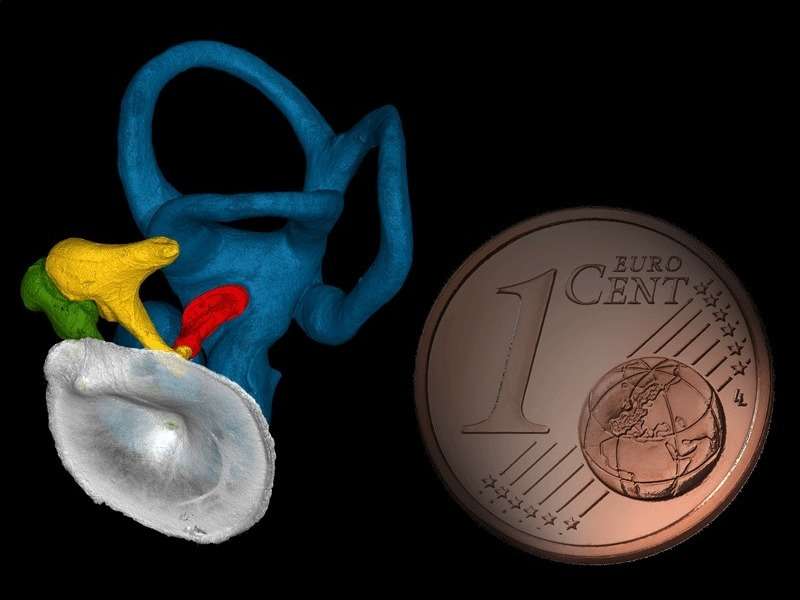September 27, 2016 report
Neanderthal middle ear structure found to be closer to modern human than apes

(Phys.org)—A team of researchers with members from the Max Planck Institute for Evolutionary Anthropology, Jena University Hospital and University College London has taken a very close look at the middle ear structure of Neanderthals and has found that while there were some obvious differences, they appeared to be closer in structure to modern humans than apes. They have outlined their study and described their results in a paper published in Proceedings of the National Academy of Sciences.
There has been a change in perception of Neanderthals in recent years as archaeologists have uncovered evidence that has suggested the extinct species of human was far more capable than has been conventionally believed. They built primitive homes, for example, created jewelry and painted on walls, and now, it appears they had an ear structure that would have enabled them to use vocal communications similar to modern humans. Prior research has suggested that Neanderthals came to exist approximately 280,000 years ago and lived in much of Europe and parts of Asia—but inexplicably disappeared approximately 40,000 years ago.
To learn more about the aural abilities of Neanderthals, the researchers gained access to ear bones from 14 Neanderthals that have been unearthed and then performed micro-CT scans on the ossicle (inner ear parts) to create 3-D digital models—this allowed the team to recreate the means by which the human sub-species would have responded to sound. In studying the models, the researchers discovered that there were obvious structural differences between Neanderthal and modern human inner ear workings, but they performed in functionally similar ways—more so than was seen in comparing ape inner ear workings with modern humans. This suggests that human and Neanderthal hearing got its start in our common ancestors
When combined with genetic research a decade ago that found the FOXP2 gene in Neanderthals associated with vocal communications and speech, these new findings suggest that Neanderthals were likely able to communicate with one another in ways that were far more advanced and sophisticated than apes or other animals. The researchers suggest that the differences in ear bone structure between modern humans and Neanderthals appears likely due to differences in brain size.
More information: Alexander Stoessel et al. Morphology and function of Neandertal and modern human ear ossicles, Proceedings of the National Academy of Sciences (2016). DOI: 10.1073/pnas.1605881113
Abstract
The diminutive middle ear ossicles (malleus, incus, stapes) housed in the tympanic cavity of the temporal bone play an important role in audition. The few known ossicles of Neandertals are distinctly different from those of anatomically modern humans (AMHs), despite the close relationship between both human species. Although not mutually exclusive, these differences may affect hearing capacity or could reflect covariation with the surrounding temporal bone. Until now, detailed comparisons were hampered by the small sample of Neandertal ossicles and the unavailability of methods combining analyses of ossicles with surrounding structures. Here, we present an analysis of the largest sample of Neandertal ossicles to date, including many previously unknown specimens, covering a wide geographic and temporal range. Microcomputed tomography scans and 3D geometric morphometrics were used to quantify shape and functional properties of the ossicles and the tympanic cavity and make comparisons with recent and extinct AMHs as well as African apes. We find striking morphological differences between ossicles of AMHs and Neandertals. Ossicles of both Neandertals and AMHs appear derived compared with the inferred ancestral morphology, albeit in different ways. Brain size increase evolved separately in AMHs and Neandertals, leading to differences in the tympanic cavity and, consequently, the shape and spatial configuration of the ossicles. Despite these different evolutionary trajectories, functional properties of the middle ear of AMHs and Neandertals are largely similar. The relevance of these functionally equivalent solutions is likely to conserve a similar auditory sensitivity level inherited from their last common ancestor.
Journal information: Proceedings of the National Academy of Sciences
© 2016 Phys.org





















